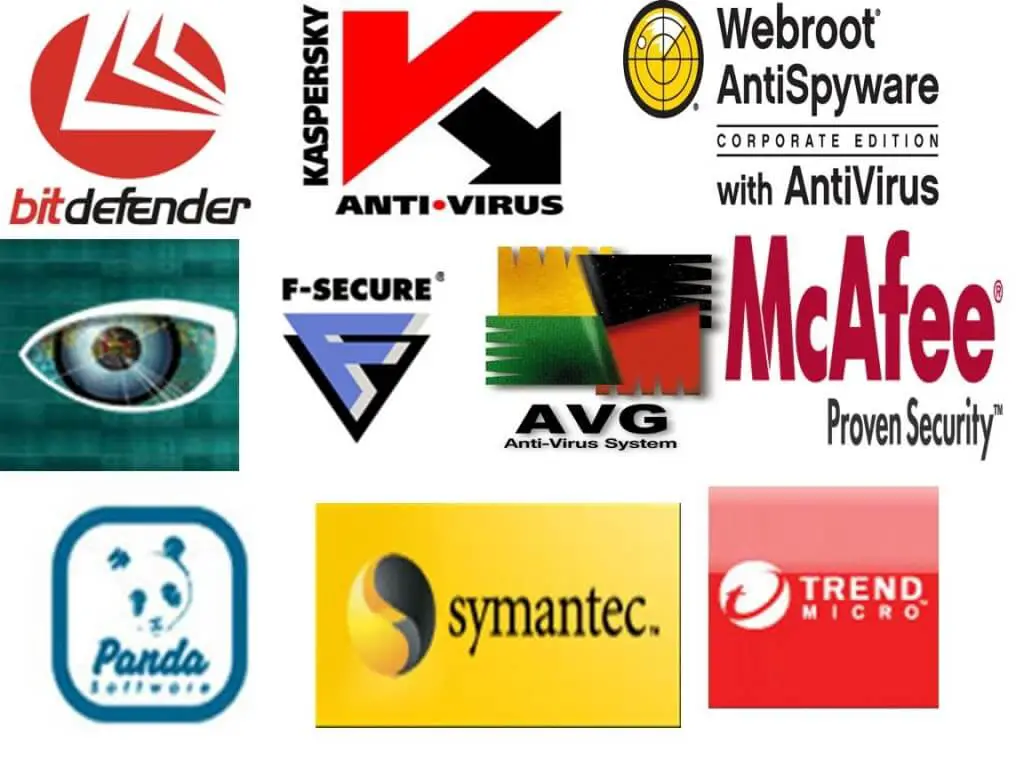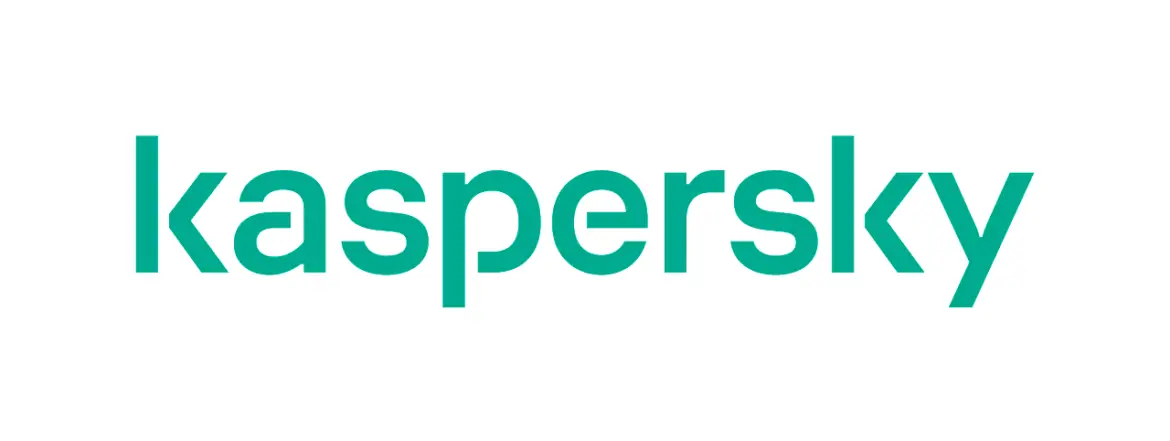
Is EDR signature based
EDR is one of the most promising solutions in the landscape of cybersecurity. The features and the abilities offered by this technology allow threat hunters and Soc analyst to have ...
blog + security solutions + Systems security + SOC Z. Oualid today

Securing your digital space is paramount in the ever-evolving landscape of cyber threats. Choosing the right antivirus can be the linchpin of your defense. So, what are the top 10 best antivirus solutions that stand guard against the myriad challenges lurking in the digital realm?
To better view on the top 10 best antivirus here is a summary table that compare those antivirus for you:
| Feature | Microsoft Defender | CrowdStrike | SentinelOne | CyberReason | Trend Micro | Sophos | McAfee | Kaspersky | VMware Carbon Black | Symantec |
| Detection Capabilities | Strong | Advanced | Advanced | Advanced | Strong | Strong | Strong | Advanced | Advanced | Strong |
| Platform Support | Windows | Windows, Mac, Linux | Windows, Mac, Linux | Windows, Mac, Linux | Windows, Mac, Linux | Windows, Mac, Linux | Windows, Mac | Windows, Mac, Linux | Windows, Mac, Linux | Windiws, Mac |
| Behavioral Analysis | Yes | Yes | Yes | Yes | Yes | Yes | Yes | Yes | Yes | Yes |
| Firewall | Windows Defender | Falcon | No | No | Yes | Yes | Yes | Yes | No | Yes |
| VPN | No | No | No | No | No | No | Yes | Yes | No | Yes |
| Identity Protection | No | No | No | No | No | Yes | Yes | Yes | No | Yes |
| Web Filtering | Yes | No | No | No | Yes | Yes | Yes | Yes | No | Yes |
| Parental Control | No | No | No | No | No | Yes | Yes | Yes | No | No |
| Password Manager | No | No | No | No | No | Yes | Yes | Yes | No | Yes |
| Automated Response | No | Yes | Yes | No | No | No | No | No | Yes | No |
| Pricing | Included with Win | Subscription | Subscription | Subscription | Subscription | Subscription | Subscription | Subscription | Subscription | Subscription |
If you want to know more about the advantages and limitations of each solution, just keep reading.
Navigating the intricate landscape of cybersecurity, Windows Defender Antivirus emerges as a stalwart defender for Windows users, providing an integrated shield against a myriad of digital threats. At its core, Defender harnesses the power of signature-based scanning, a sophisticated technique that compares file attributes to a vast database of known malware signatures. This ensures that common threats are swiftly identified and neutralized, offering a robust first line of defense.
Beyond traditional methods, Windows Defender embraces behavioral analysis, scrutinizing the behavior of files and applications in real-time. This dynamic approach allows it to detect and block malicious activities even if the specific signature is not yet identified, offering a layer of protection against emerging threats.
In the user interface, Windows Defender operates seamlessly within the Windows environment, minimizing disruptions to the user experience. Its unobtrusive nature ensures that it diligently works in the background, providing continuous protection without impeding system performance.
While Windows Defender comes integrated with Windows operating systems and boasts commendable features, it does have some limitations. Notably, its effectiveness can vary against more sophisticated and targeted attacks. Advanced malware and zero-day exploits may pose challenges, as Defender relies on predefined signatures and behavioral patterns. It may not always keep pace with rapidly evolving threats that employ intricate evasion techniques.
Additionally, Windows Defender’s detection capabilities may not match those of some third-party antivirus solutions. Specialized tools from other vendors might offer more advanced features, including enhanced threat intelligence, proactive defenses, and supplementary privacy controls.
Despite these limitations, Windows Defender serves as a solid baseline for users seeking a built-in, reliable antivirus solution. Its continuous updates from Microsoft ensure that it evolves to tackle new threats. However, for users with specific needs or a desire for additional features, exploring complementary security tools or advanced antivirus solutions could be a prudent consideration to bolster their overall defense strategy. As the digital landscape evolves, striking a balance between the convenience of integration and the demand for advanced features becomes key in fortifying one’s cybersecurity posture.
CrowdStrike is one of the robust antivirus solution, tailored for the intricate needs of the digital landscape. At its core, CrowdStrike boasts advanced threat detection capabilities, utilizing a cloud-native approach for real-time monitoring and response. This means that the antivirus operates with the agility of cloud technology, allowing for swift identification and mitigation of potential threats.
One standout feature of CrowdStrike is its endpoint detection and response (EDR) capabilities. EDR goes beyond traditional antivirus measures, providing a comprehensive view into endpoint activities. This not only aids in identifying known threats but also enables proactive detection of sophisticated, non-common malware attacks. The inclusion of behavioral analytics is a key strength, allowing CrowdStrike to scrutinize patterns and anomalies in real-time, enhancing its ability to thwart emerging threats that may not have established signatures.
The seamless integration of CrowdStrike with various Security Information and Event Management (SIEM) systems is another noteworthy aspect. This ensures that security events are not isolated but are part of a broader, intelligible narrative. The antivirus solution actively contributes to the collective intelligence of an organization’s security posture, facilitating streamlined workflows for security teams.
However, like any cybersecurity tool, CrowdStrike does have its limitations. Notably, its effectiveness is contingent on the quality of internet connectivity. Since it heavily relies on cloud-native architecture, a stable and robust internet connection is crucial for optimal performance. Additionally, while CrowdStrike excels in detecting known and novel threats, its efficacy may vary against highly sophisticated and targeted attacks. No antivirus solution can provide absolute certainty in the face of rapidly evolving cyber threats.
Furthermore, the deployment of CrowdStrike requires careful consideration of an organization’s specific needs and existing infrastructure. The transition to cloud-native security solutions may pose challenges for environments with legacy systems or resource constraints.
SentinelOne emerges as a formidable antivirus solution, designed to safeguard digital environments with its advanced features. At its core, SentinelOne employs cutting-edge artificial intelligence and machine learning algorithms for proactive threat detection. This means it doesn’t merely rely on known signatures but actively learns and adapts to emerging threats in real-time, enhancing its capacity to identify and neutralize a wide array of malware.
A standout feature of SentinelOne is its Endpoint Detection and Response (EDR) capabilities. This goes beyond traditional antivirus functions, offering a holistic view into endpoint activities. By continuously monitoring and analyzing behaviors, SentinelOne can swiftly detect and respond to both common and sophisticated threats. This real-time insight is invaluable for security teams aiming to stay one step ahead of cyber adversaries.
The autonomous nature of SentinelOne is another strength. It operates without the need for constant human intervention, automatically mitigating threats as they arise. This reduces the burden on security teams, allowing them to focus on strategic initiatives rather than routine threat detection and response tasks.
Furthermore, SentinelOne’s emphasis on threat hunting sets it apart. Its Threat Hunting console enables security professionals to proactively search for and analyze potential threats within their environment. This empowers organizations to take a proactive stance against potential security risks.
However, like any cybersecurity tool, SentinelOne does have its limitations. While it excels in identifying and responding to a wide range of threats, its effectiveness may vary against highly sophisticated and targeted attacks. No antivirus solution can offer absolute certainty in the face of rapidly evolving cyber threats.
Additionally, organizations must consider factors such as resource utilization. While SentinelOne aims for minimal impact on system performance, the actual impact may depend on the specific environment and system configurations.
Cyberreason presents itself as a stalwart defender, equipped with features designed to fortify digital environments. At its core, Cyberreason boasts advanced threat detection capabilities, employing behavioral analysis to proactively identify and neutralize a broad spectrum of cyber threats. Unlike traditional antivirus solutions that rely on known signatures, Cyberreason’s approach involves continuously monitoring endpoint behaviors, enabling it to detect anomalies and potential malicious activities in real-time.
One of the notable features of Cyberreason is its emphasis on endpoint detection and response (EDR). This means that, beyond conventional antivirus functions, Cyberreason provides a comprehensive view of endpoint activities. By closely examining the behavior of files and processes, it not only detects known threats but also has the capability to thwart sophisticated, non-common malware attacks that might attempt to operate under the radar.
Another strength lies in Cyberreason’s approach to threat hunting. The platform empowers security professionals to actively seek out potential threats within their environment. This proactive stance enhances an organization’s ability to stay ahead of emerging risks, contributing to a more resilient security posture.
However, as with any cybersecurity solution, Cyberreason has its limitations. While its behavioral analysis is effective against a wide range of threats, highly sophisticated and targeted attacks may pose challenges. No antivirus solution can offer absolute certainty in the face of evolving cyber threats. Additionally, the effectiveness of Cyberreason is influenced by the quality of threat intelligence it receives. The platform’s ability to detect new threats relies on timely updates and insights into emerging cyber threats.
Furthermore, organizations considering Cyberreason should carefully evaluate their specific needs and existing infrastructure. Implementation may require adjustments to ensure seamless integration and effective operation within the organization’s digital landscape.
Trend Micro stands out as a formidable antivirus solution with features geared towards comprehensive threat protection. At its core, Trend Micro leverages a robust combination of traditional signature-based scanning and advanced techniques like behavioral analysis. This dual approach ensures that it not only identifies known malware through signatures but also proactively detects and stops emerging threats by analyzing the behavior of files and processes in real-time.
One prominent feature of Trend Micro is its multi-layered defense strategy. It doesn’t solely rely on endpoint protection; rather, it extends its reach to secure networks, cloud environments, and email gateways. This holistic approach provides a broad security umbrella, defending against threats at multiple entry points. The integration of email security is particularly noteworthy, helping to thwart phishing attempts and malicious attachments before they even reach the user’s inbox.
Trend Micro’s focus on web filtering is another commendable aspect. By scrutinizing web content and URLs, it adds an extra layer of protection against malicious websites, potentially blocking access to harmful content and preventing users from unwittingly navigating to malicious pages.
However, like any cybersecurity tool, Trend Micro has its limitations. While its multi-layered approach is effective against a wide range of threats, highly sophisticated and targeted attacks may pose challenges. No antivirus solution can provide absolute certainty in the face of constantly evolving cyber threats. Additionally, the effectiveness of Trend Micro relies on timely updates to its threat intelligence database. Without up-to-date information, it may be less equipped to identify and mitigate new and emerging threats.
Furthermore, organizations should be mindful of resource utilization. While Trend Micro aims for minimal impact on system performance, the actual impact may vary depending on factors such as the specific environment and system configurations.

At its core, Sophos employs a multi-layered defense mechanism that combines traditional signature-based scanning with advanced techniques like behavioral analysis and machine learning. This hybrid approach ensures a robust defense against known and emerging threats by identifying malicious patterns and behaviors in real-time.
One standout feature of Sophos is its synchronized security model. Unlike standalone antivirus solutions, Sophos aims for a holistic defense strategy by integrating various security components such as endpoint protection, firewall, and even mobile device management. This synchronized approach enables different elements of the security infrastructure to communicate and share threat intelligence, fostering a more cohesive and responsive defense against cyber threats.
Sophos takes a proactive stance against malicious web content through its web filtering feature. By scrutinizing web traffic and blocking access to potentially harmful sites, Sophos adds an additional layer of protection, preventing users from inadvertently exposing the network to malicious content.
Moreover, Sophos emphasizes its endpoint detection and response (EDR) capabilities. This means that, beyond traditional antivirus functions, Sophos provides a comprehensive view into endpoint activities. By continuously monitoring and analyzing behaviors, it not only detects known threats but also empowers organizations to proactively identify and respond to sophisticated, non-common malware attacks.
However, like any cybersecurity tool, Sophos has its limitations. While its multi-layered defense is effective against a wide range of threats, highly sophisticated and targeted attacks may pose challenges. No antivirus solution can offer absolute certainty in the face of rapidly evolving cyber threats. Additionally, the effectiveness of Sophos relies on the timely distribution of threat intelligence updates. Without up-to-date information, it may be less equipped to identify and mitigate new and emerging threats.
Furthermore, organizations considering Sophos should carefully assess their specific needs and existing infrastructure. The integration of various security components may require careful configuration to ensure optimal performance and seamless operation within the organization’s digital landscape.
Sophos stands as a robust antivirus solution, combining traditional and advanced techniques with a synchronized security model. Its emphasis on web filtering and EDR contributes to a comprehensive defense strategy. However, organizations should be aware of its limitations and consider a holistic cybersecurity approach to address potential gaps, especially in the face of sophisticated and rapidly evolving cyber threats.
In the realm of cybersecurity, McAfee stands as a venerable antivirus solution, equipped with features designed to fortify digital landscapes. At its core, McAfee employs a robust combination of signature-based scanning and heuristic analysis, ensuring a comprehensive defense against both known and emerging threats. This dual approach allows the antivirus to identify and neutralize malware with known signatures while also proactively detecting suspicious patterns and behaviors in real-time.
One notable feature of McAfee is its integration of additional security components, extending its protective reach beyond traditional antivirus functions. McAfee provides users with not just antivirus protection but also a firewall, virtual private network (VPN), and identity protection. This all-encompassing approach offers users a suite of tools to defend against various cyber threats, creating a more holistic security posture.
McAfee’s focus on identity protection is particularly commendable. With the prevalence of identity theft and unauthorized access, the inclusion of features such as identity monitoring and theft protection adds an extra layer of security, safeguarding users’ personal information.
Moreover, McAfee emphasizes its cloud-based threat intelligence, enabling real-time updates and responses to the evolving threat landscape. This dynamic nature ensures that the antivirus is equipped with the latest information to detect and mitigate new and emerging threats promptly.
However, like any cybersecurity tool, McAfee has its limitations. While its multi-faceted defense is effective against a broad spectrum of threats, highly sophisticated and targeted attacks may pose challenges. No antivirus solution can offer absolute certainty in the face of rapidly evolving cyber threats. Additionally, the effectiveness of McAfee is contingent on regular updates and the timely distribution of threat intelligence. Without up-to-date information, it may be less equipped to identify and mitigate new and emerging threats.
Furthermore, organizations should be mindful of resource utilization. While McAfee strives for minimal impact on system performance, the actual impact may vary depending on factors such as the specific environment and system configurations.
McAfee stands as a comprehensive antivirus solution, offering not only traditional protection but also additional security components for a more extensive defense strategy. Its focus on identity protection and cloud-based threat intelligence contributes to its effectiveness. However, organizations should be aware of its limitations and consider a holistic cybersecurity strategy to address potential gaps, especially in the face of sophisticated and rapidly evolving cyber threats.

At its core, Kaspersky employs a dual-pronged approach for threat detection. Utilizing traditional signature-based scanning, it swiftly identifies and neutralizes known malware. Simultaneously, its advanced heuristic analysis and behavioral detection mechanisms enable the antivirus to proactively detect and thwart emerging threats by scrutinizing patterns and behaviors in real-time.
One key strength of Kaspersky lies in its extensive feature set. Beyond the traditional antivirus functions, Kaspersky offers users a suite of tools, including a firewall, virtual private network (VPN), parental controls, and even a password manager. This comprehensive approach not only safeguards against malicious software but also addresses broader security concerns, providing users with a multifaceted defense strategy.
Kaspersky’s emphasis on proactive defense is particularly noteworthy. The antivirus actively monitors web traffic, scanning URLs and web content to identify and block potentially malicious sites. This web filtering feature adds an additional layer of protection, preventing users from inadvertently exposing their systems to harmful content.
Moreover, Kaspersky incorporates a robust threat intelligence network that facilitates real-time updates. This ensures that the antivirus is continuously armed with the latest information to detect and mitigate new and evolving threats promptly.
However, like any cybersecurity tool, Kaspersky has its limitations. While its multifaceted defense is effective against a wide array of threats, highly sophisticated and targeted attacks may pose challenges. No antivirus solution can provide absolute certainty in the face of constantly evolving cyber threats. Additionally, Kaspersky’s effectiveness is contingent on regular updates and the timely distribution of threat intelligence. Without up-to-date information, it may be less equipped to identify and mitigate new and emerging threats.
Furthermore, organizations should consider the potential impact on system performance. While Kaspersky strives for minimal disruption, the actual impact may vary depending on factors such as the specific environment and system configurations.
Kaspersky stands as a versatile antivirus solution, offering a rich feature set and proactive defense mechanisms. Its multifaceted approach addresses various security concerns. However, organizations should be aware of its limitations and consider a holistic cybersecurity strategy to address potential gaps, especially in the face of sophisticated and rapidly evolving cyber threats.
VMware Carbon Black emerges as a potent antivirus solution, armed with features tailored to meet the challenges of the ever-evolving digital landscape. At its core, VMware Carbon Black employs an innovative cloud-native architecture that facilitates real-time threat intelligence and response. This approach ensures that the antivirus is not just reactive but proactively detects and neutralizes emerging threats by leveraging advanced behavioral analysis and machine learning.
One key strength of VMware Carbon Black lies in its Endpoint Detection and Response (EDR) capabilities. Beyond traditional antivirus functions, EDR provides a comprehensive view of endpoint activities. By continuously monitoring behaviors and analyzing data, Carbon Black not only identifies known threats but also empowers security teams to proactively hunt for and respond to sophisticated, non-common malware attacks.
Moreover, Carbon Black’s emphasis on threat hunting is a standout feature. The antivirus provides security professionals with tools and insights to actively search for potential threats within their environment, fostering a proactive defense posture.
Additionally, VMware Carbon Black integrates seamlessly with Security Information and Event Management (SIEM) systems, ensuring that security events are not isolated but contribute to a broader, intelligible security narrative. This integration enhances the ability to correlate and analyze security data effectively.
However, like any cybersecurity tool, VMware Carbon Black has its limitations. While its cloud-native architecture enhances real-time response, it also means that effective operation is contingent on a stable and robust internet connection. Organizations with limited connectivity may experience challenges in optimizing the benefits of Carbon Black’s cloud-based approach.
Furthermore, the effectiveness of VMware Carbon Black depends on the quality and timeliness of threat intelligence updates. Without up-to-date information, the antivirus may be less equipped to identify and mitigate new and emerging threats.
VMware Carbon Black stands as a forward-looking antivirus solution, leveraging cloud-native architecture and EDR capabilities for proactive threat detection and response. Its emphasis on threat hunting and integration with SIEM systems contributes to a robust defense strategy. However, organizations should be mindful of its limitations, particularly in connectivity-dependent scenarios, and consider a holistic cybersecurity approach to address potential gaps in their defense posture.

Symantec stands as a venerable antivirus solution, fortified with features designed to navigate the complexities of the digital landscape. At its core, Symantec employs a dual-layered defense strategy, utilizing both traditional signature-based scanning and advanced heuristics. This combination ensures a robust shield against known malware signatures while also proactively identifying and neutralizing emerging threats by analyzing patterns and behaviors in real-time.
One distinctive feature of Symantec lies in its comprehensive suite of security tools beyond traditional antivirus functions. Symantec offers users additional layers of protection, including a firewall, intrusion prevention system (IPS), and advanced threat protection. This multifaceted approach addresses not only the immediate threat of malicious software but also broader security concerns, fostering a holistic defense posture.
Symantec’s focus on endpoint protection is particularly noteworthy. Through advanced Endpoint Detection and Response (EDR) capabilities, Symantec provides a detailed view of endpoint activities. This means that beyond merely identifying known threats, the antivirus enables security teams to actively monitor, hunt for, and respond to sophisticated, non-common malware attacks.
Moreover, Symantec emphasizes its cloud-based threat intelligence network, ensuring that the antivirus is continuously updated with the latest information to detect and mitigate new and evolving threats promptly. This dynamic nature enhances Symantec’s ability to stay ahead in the cat-and-mouse game with cyber adversaries.
However, like any cybersecurity tool, Symantec has its limitations. While its multifaceted defense is effective against a broad spectrum of threats, highly sophisticated and targeted attacks may pose challenges. No antivirus solution can provide absolute certainty in the face of rapidly evolving cyber threats. Additionally, Symantec’s effectiveness is contingent on regular updates and the timely distribution of threat intelligence. Without up-to-date information, it may be less equipped to identify and mitigate new and emerging threats.
Furthermore, organizations should be mindful of resource utilization. While Symantec aims for minimal impact on system performance, the actual impact may vary depending on factors such as the specific environment and system configurations.
Symantec stands as a stalwart antivirus solution, offering a dual-layered defense and a suite of security tools for comprehensive protection. Its emphasis on endpoint protection and cloud-based threat intelligence contributes to its effectiveness. However, organizations should be aware of its limitations and consider a holistic cybersecurity strategy to address potential gaps, especially in the face of sophisticated and rapidly evolving cyber threats.
Written by: Z. Oualid
I am a Cyber Security Expert, I have worked with many companies around the globe to secure their applications and their networks. I am certified OSCP and OSCE which are the most recognized and hard technical certifications in the industry of cybersecurity. I am also a Certifed Ethical hacker (CEH). I hope you enjoy my articles :).

blog Z. Oualid
EDR is one of the most promising solutions in the landscape of cybersecurity. The features and the abilities offered by this technology allow threat hunters and Soc analyst to have ...



today
blog + secure coding + security solutions + Smart contract Z. Oualid
Undoubtedly, ChatGPT stands out as one of the most remarkable inventions of 2021. Its wide-ranging capabilities and applications have opened up endless possibilities for human interaction and problem-solving. Furthermore, certain [...]
Copyright © 2020 Getsecureworld.
Post comments (0)